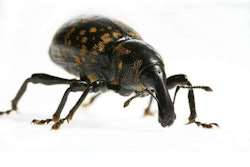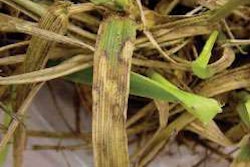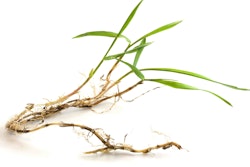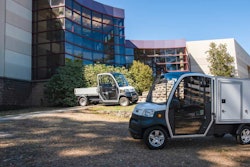The latest on how to get damaged trees, and client relations, on the mend.
On Aug. 11, the Environmental Protection Agency banned the sale of Imprelis, an herbicide introduced by DuPont last year that has recently been linked to scores of tree deaths around the country. The company had withdrawn sales of the product a week earlier and announced plans for a refund program.
And now, more than three months after initial reports of injury to trees, lawn care operators (LCOs) are waiting to see if certain conifers, such as white pine and Norway spruce trees, on clients’ properties will recover or whether they should be removed from the landscapes.
“Be patient, water the trees and hope for the best,” says Pete Landschoot, professor of turfgrass science at Penn State University. Landschoot was among the first to post online information regarding a course of action for Imprelis-damaged trees.
There are no quick fixes in sight.
“Drought and heat stress, typical this time of year, are certainly not going to help the situation,” Landschoot says. In addition to watering trees to relieve this stress, he also recommends holding off on fertilizing the damaged trees, which could exacerbate the situation.
Imprelis was launched in 2010 as one of the most anticipated herbicides to hit the market in years.
Twisting of new growth on white pine may indicate Imprelis damage.
Instead, working with clients and documenting Imprelis-related damage is the best course of action for now. “It’s the best recourse for getting compensated for those trees,” Landschoot advises. “Follow the damage, keep records and take pictures.”
DuPont Response
A letter sent to LCOs from Michael McDermott, global business leader for DuPont, acknowledged Imprelis was responsible for injuring some tree species and stressed the company’s commitment to work with every customer who has experienced Imprelis-related damage.
“Follow the damage, keep records and take pictures.”
“First and foremost, I want to underscore DuPont’s commitment to our customers’ satisfaction and to responsible stewardship of our products. We sincerely regret any tree injuries the Imprelis may have caused and will work with you to promptly and fairly resolve problems associated with our product,” he stated in a July 27 letter.
DuPont spokesperson Kate Childress declined to discuss plans for reimbursement or insurance supplementation but says the company wants to work with lawn care companies on an individual basis to resolve claims. The company also has “engaged 20 independent, certified arborist companies to work with you and evaluate your claim,” according to the company’s website (www.imprelis-facts.com)
At press time, DuPont had not released the number of claims it has received, but Extension services in 22 states from Kansas to Pennsylvania have reported injury to conifers associated with Imprelis applications, according to the Purdue Plant & Pest Diagnostic Laboratory.
“We’re not sharing the scope yet because we’re convinced we haven’t heard from everyone, yet,” Childress says.
Early symptoms of damage on a Norway spruceRyan Lawn & Tree in Kansas City, Missouri, began using Imprelis last spring. With citywide use, Larry Ryan, founder and owner of the company, estimates 8 percent of his clients sustained Imprelis-related injury to their trees. “Other companies I’ve talked to have had a higher percentage — as much as a 25 percent for some smaller companies. We’ve been fortunate,” he says.
Childress says she believes the percentage could be less when tallied nationwide. “We don’t want to release a number now because we don’t want to trivialize any of the claims. DuPont is taking each claim seriously, and we are putting our attention and care to each case.”
Cause Uncertain
Imprelis was launched in 2010 as one of the most anticipated herbicides to hit the market in years. Research indicated the herbicide would be highly effective against a number of notoriously hard-to-control weeds, such as ground ivy, clover, dandelion and wild violet. That, coupled with a low toxicity to mammals and its ability to achieve weed control at a low rate of application, made it an attractive product.
Initial reports pointed to possible applicator error as the reason for tree damage because not all applications have resulted in injury. But when more and more LCOs across the Midwest and eastern United States began to report damage, the product came into focus as the common denominator.
Why and how Imprelis causes injury to conifers has yet to be determined. DuPont is working with the EPA, state regulators and university extension specialists to determine the cause of the damage.
The Imprelis label warns the product should not be applied within the drip line of trees, but some operators speculate heavy rains may cause it to leach into closer proximity and cause damage.
Dealing with Injured Trees
It appears some trees injured by Imprelis will make a recovery, according to arborists. However, the recovery could take a few seasons.
The team of arborists working with DuPont recommends that injured trees remain in the ground this fall and winter to fully assess the potential for recovery next spring, Childress says. In some instances, though, if it’s obvious the tree is beyond repair or if the client has low tolerance for a recovering tree on their property, removal may be your only option.
Ryan’s team is evaluating damage and grading each tree a 1, 2 or 3. “Threes will not recover, most likely,” he says. “All we can do is learn from this, play it out, and add it to our foundation of knowledge. We’re all really guessing right now.”
Treatment Recommendations
DuPont has issued these recommendations, based on a Bartlett Tree technical report on remedial treatments practices, for trees showing signs of stress:
• Irrigating the plant during dry periods will minimize moisture stress.
• Do not over irrigate. One good soaking per week will suffice if there has been no rain.
• Tree fertilization should be avoided for a minimum of one growing season because stimulating excess growth can compound injury from certain herbicides.
• Deep root fertilization of trees should be avoided until trees recover.
• Pruning should be delayed for at least a year to fully assess the extent of injury.
• Immediate pruning is necessary if dead branches pose danger to life or property.
• Consult a Certified Arborist, Registered Consulting Arborist or Tree Care Industry Association member company if you have questions regarding tree care.
For more information from DuPont, see its website: imprelis-facts.com or call the toll-free hotline: 866-796-4783.
By Cindy Ratcliff









